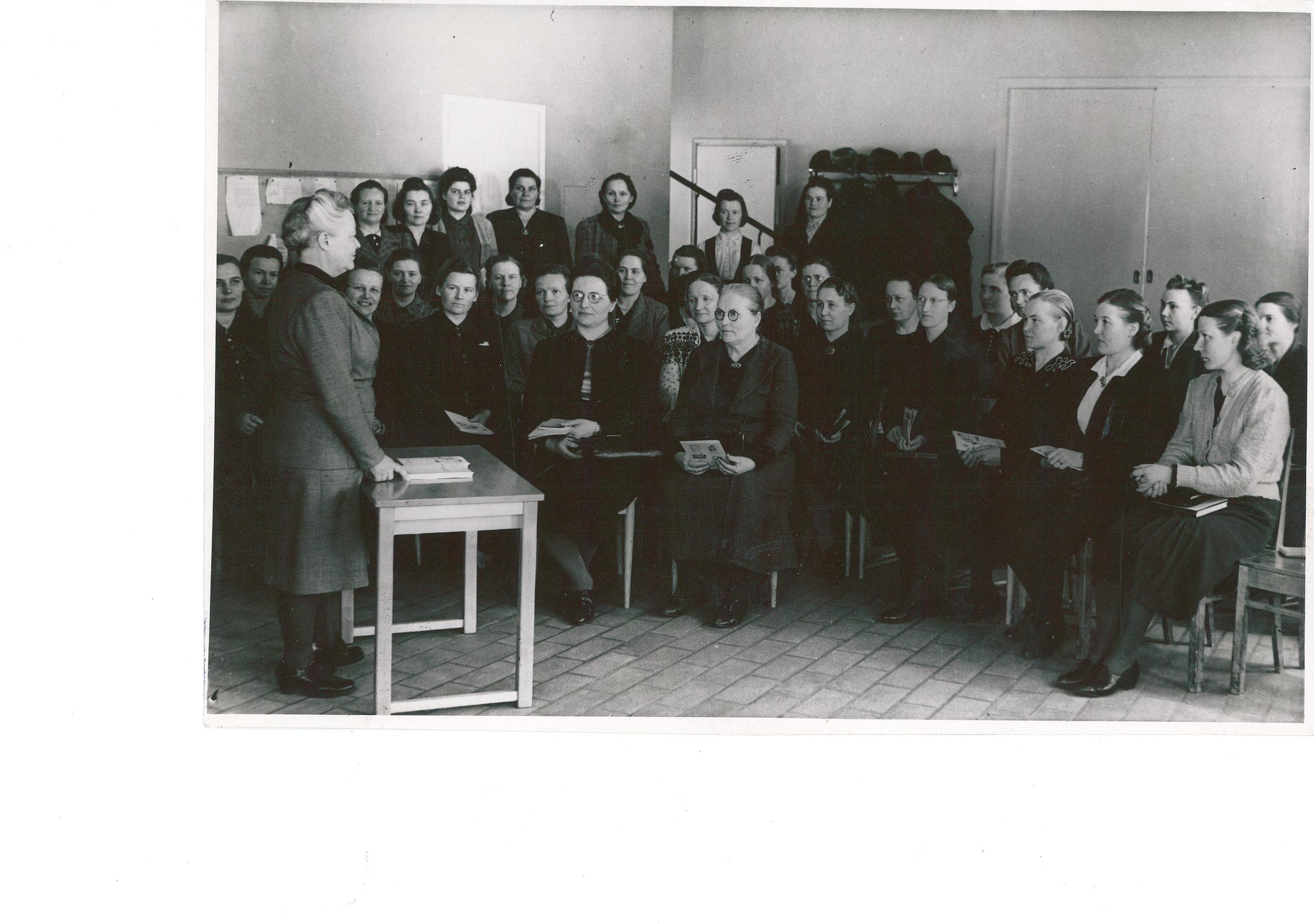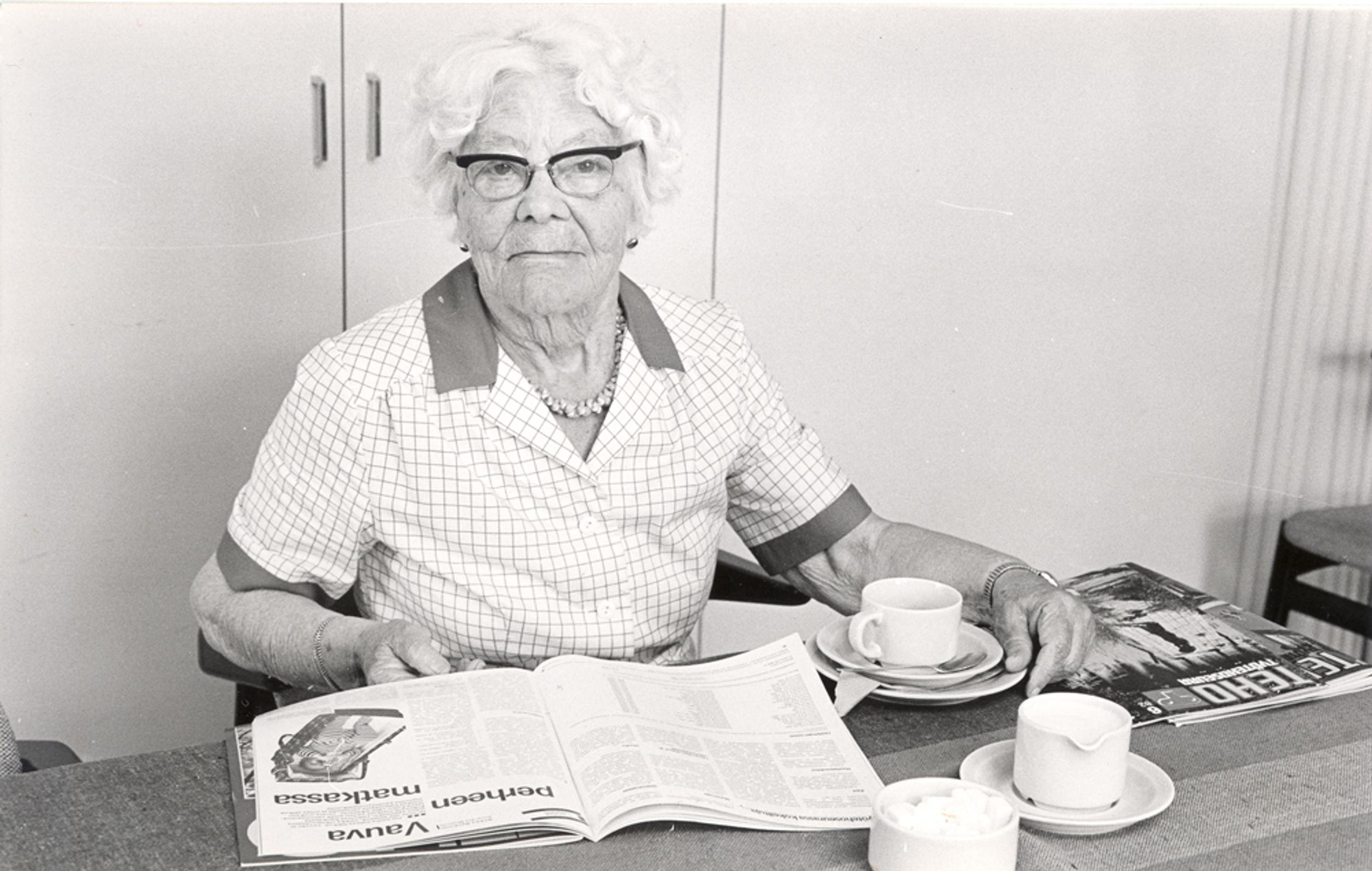
Meet Maiju Gebhard, inventor of the Finnish dish-drying cabinet—or was it an American invention, after all?
The dish-drying cabinet is widely considered the invention of Finnish innovator Maiju Gebhard, but she never patented it. As a result, Americans have also tried to claim it.
“This is shocking!” concluded Maiju Gebhard (1896–1986) in her 1930’s magazine article for the Finnish organization Työtehoseura (“Work Performance Association”).
She had just presented her calculations, showing that Finnish women spend 30,450 hours of their lives washing dishes: “That’s 10 straight years of eight-hour days, weekends and holidays included”.
Spurred by these staggering numbers, Gebhard created an invention she estimated could save a homemaker up to three hours of work each day: the dish-drying cabinet.
“Gebhard began developing her idea from a tabletop drying rack used by Swedish homemakers. Maiju’s specific idea was to place the rack behind cabinet doors above the sink, so you could put the dishes there while they were still wet and let water drip directly onto the sink. She also realized the bottom of the cabinet needed to be open to let air circulate and help the dishes dry thoroughly,” explains Työtehoseura researcher Tarja Marjomaa.
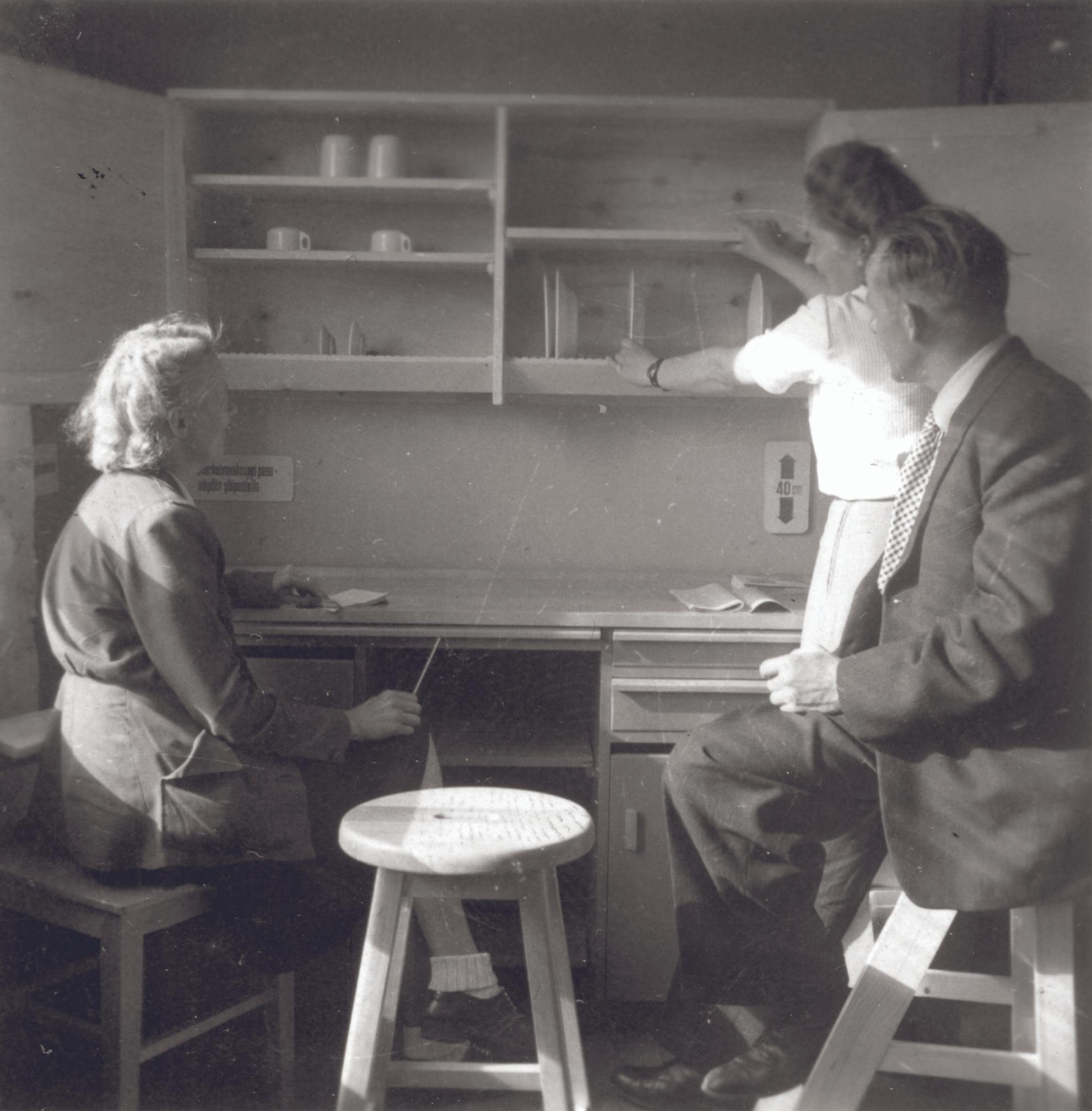
Industrial production of dish-drying cabinets began in 1945 at Työtehoseura’s workshops. Early cabinets were made entirely of wood, including their drying racks, and came in only two sizes: 135 cm and 100 cm wide (53 in and 39 in, respectively). Työtehoseura also sold blueprints for the dish-drying cabinet.
“They had wooden slats at the bottom for plates, and the racks above them were used to store glasses, coffee cups, pots, and so on.”
A couple of years later, they started making dish-drying cabinets at Enso-Gutzeit’s Tornator factory.
A versatile inventor
Maiju Gebhard devoted her life to optimizing housework. During the war years, when men were at the front and women had to tackle even the toughest household tasks, she invented a carrying aid called ämmänlänget. This device made it easier to carry water or firewood into the house. She also created a special chair that let you work in a semi-seated position.
“It had a support in the middle of the backrest that you could fold horizontally. Once folded, you could sit on that backrest,” says Marjomaa.
In the 1930 edition of her handbook for smallholders, Gebhard suggested attaching a slop bucket to the lower door of a kitchen cabinet, essentially the first idea leading to a modern compost bin.
“One could throw in potato peels and pour in, for instance, the water used to boil them. The slop bucket sat on a small shelf inside the trash cabinet door.”
Gebhard also cared deeply about increasing family time, though she herself never married or had children.
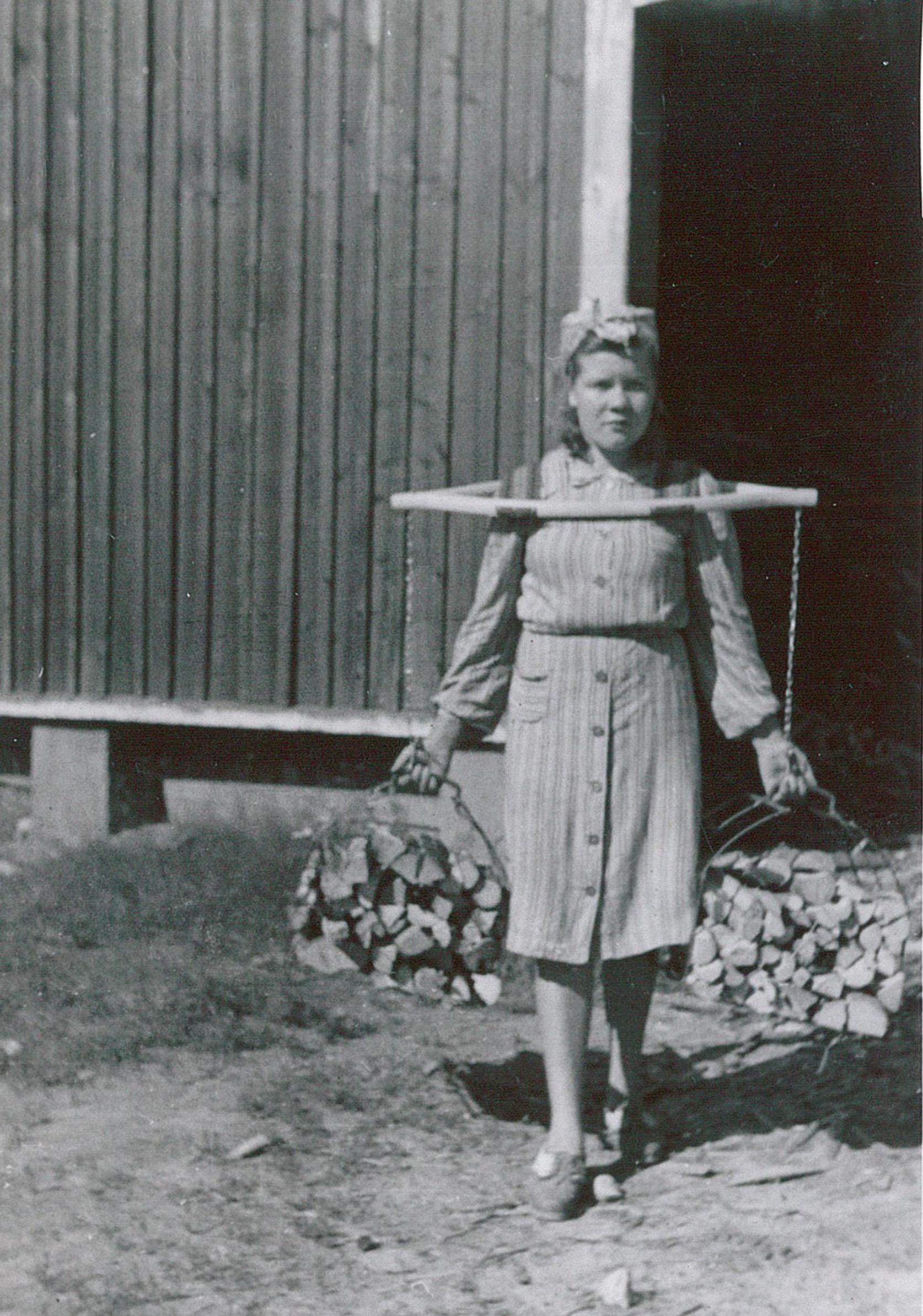
No patent in sight
Although the dish-drying cabinet is a clear Finnish invention to us, others also claim credit alongside Gebhard. An American named Angiolina Scheuermann received a patent for her design in the fall of 1929, while Louise R. Krause patented her drying cabinet in 1932. Even so, the first to do it was Margarete Schütte-Lihotzky, who introduced a dish-drying rack above the sink in Germany in 1926.
The cabinet Gebhard designed was never patented. According to Tarja Marjomaa, the application simply appears never to have been filed.
So who is truly the inventor of the dish-drying cabinet? Did Gebhard know what was happening elsewhere in the world nearly a century ago, when information traveled so slowly between countries? Probably not. And while Gebhard was, by the standards of her era, very international and spoke multiple languages, she generally traveled only to Sweden.
Two years before Krause patented her cabinet, Gebhard wrote in her handbook for smallholders (1930):
“An especially designated rack could be made for drying dishes, either a smaller one to keep on the dishwashing table or a larger one attached to the wall above the dishwashing table.”
Maybe what matters isn’t who was first, but how many thousands of hours Gebhard saved Finnish women—and later men as well—just as she intended.
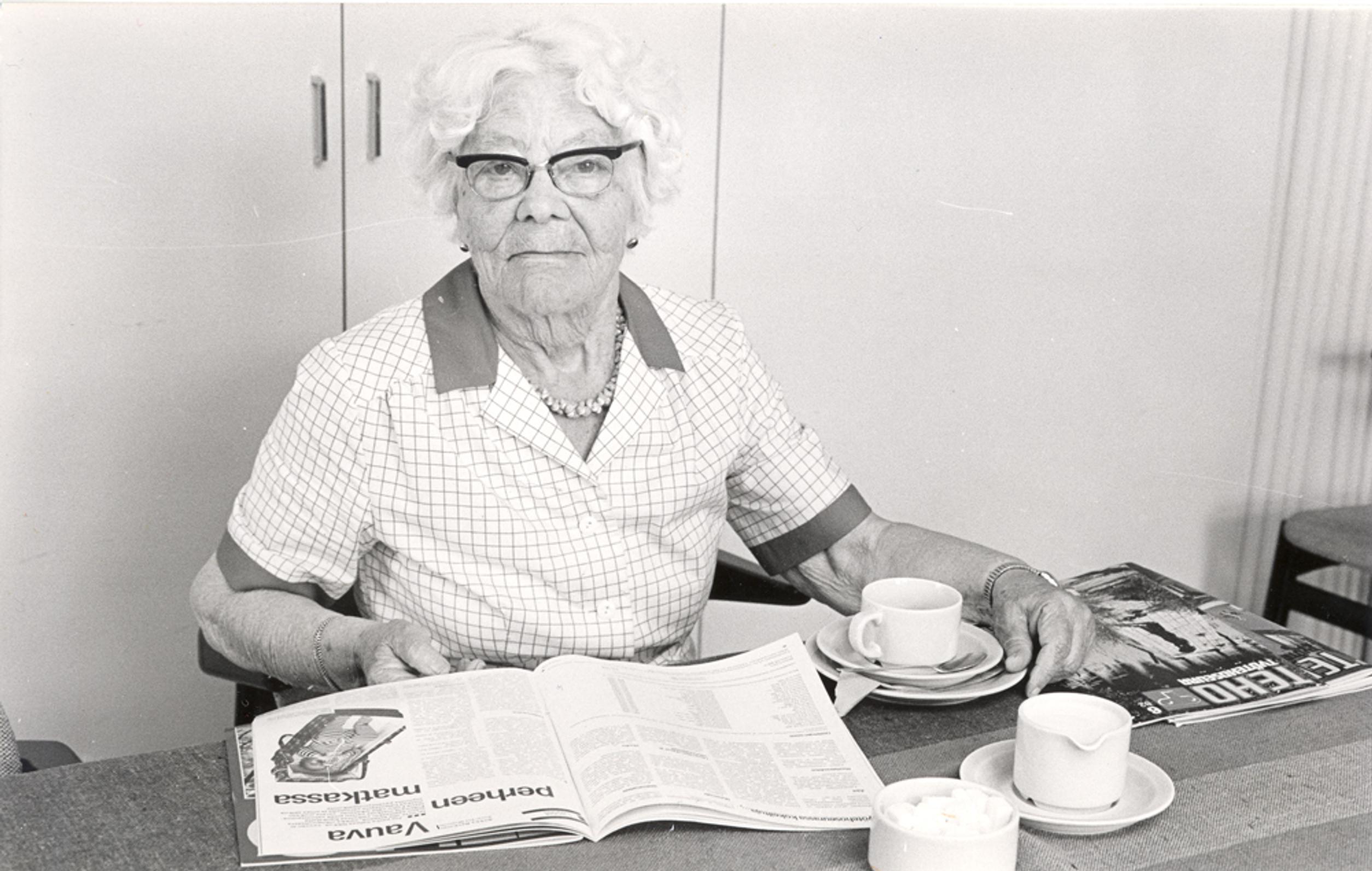
The evolution of the Finnish dish cabinet
1930 The concept of the dish-drying cabinet is introduced
1944 The dish-drying cabinet is developed under Maiju Gebhard’s leadership at Työtehoseura
1945 Industrial production begins in Vilppula
1948 Large-scale industrial production begins
1954 Plastic-coated wire shelves replace wooden slat shelves
1960s Manufacturers start using particleboard and melamine-coated panels
1982 Kitchen cabinet and dish-drying cabinet dimensions are standardized
Late 1990s Plastic-coated steel-wire shelves are replaced with stainless steel or powder-coated racks
